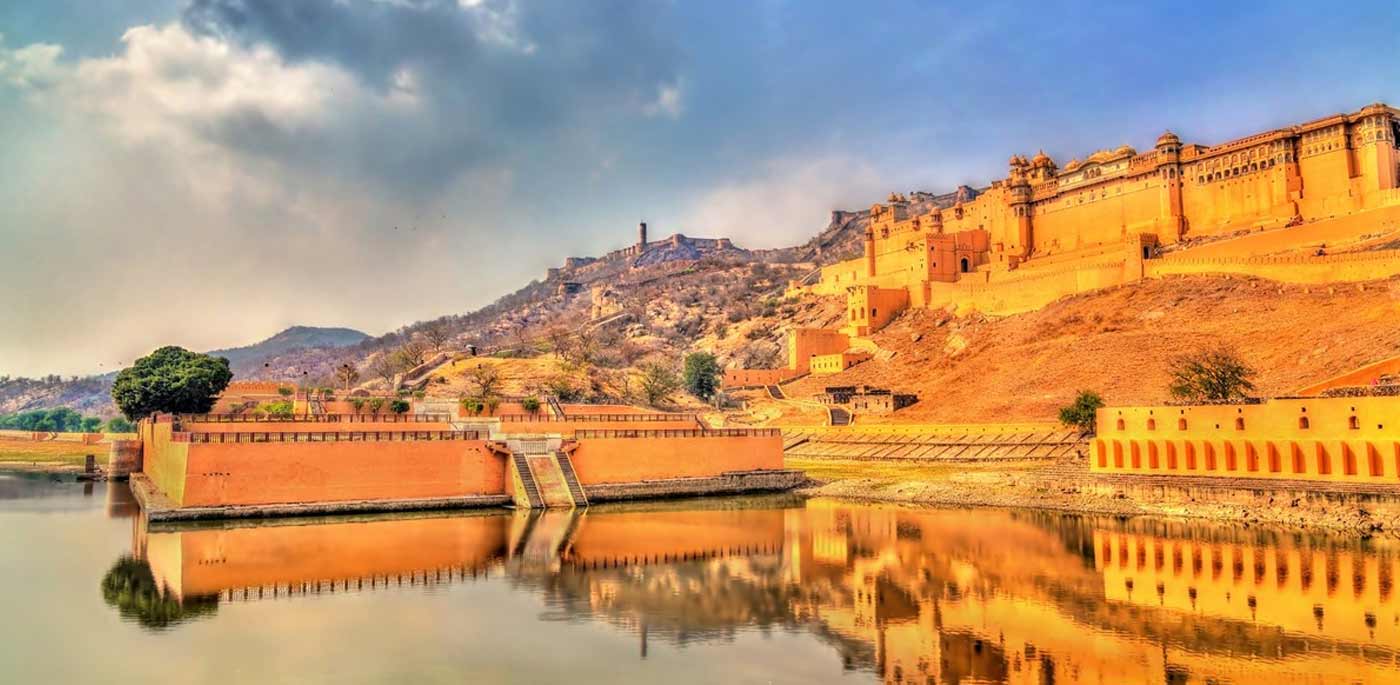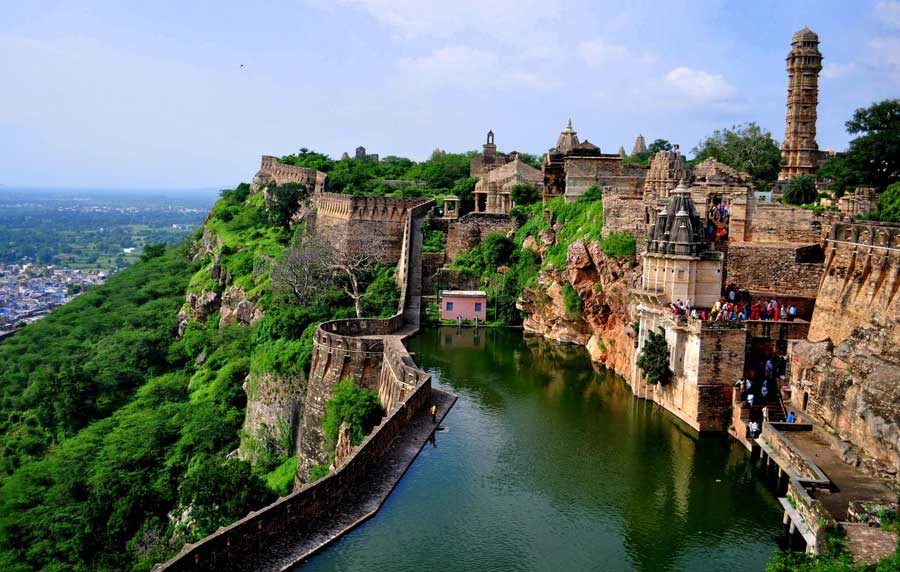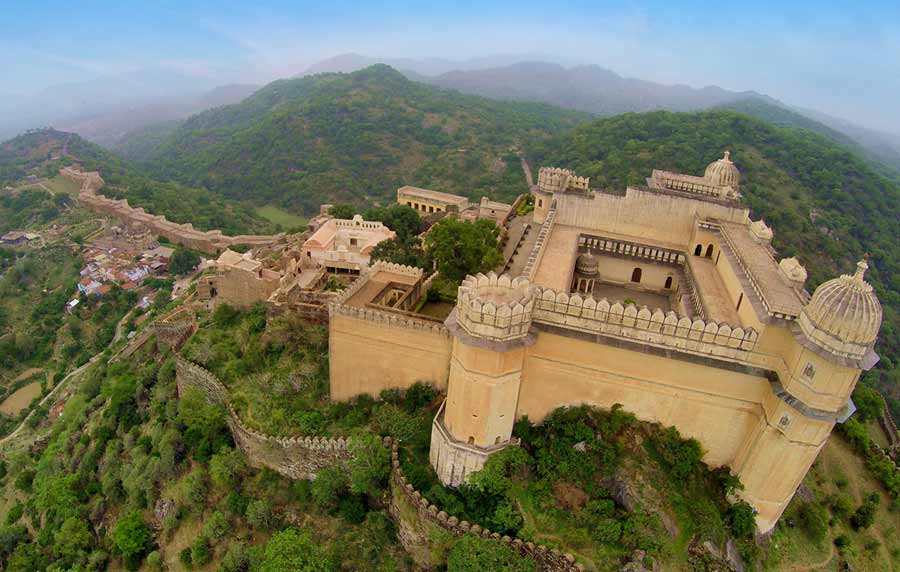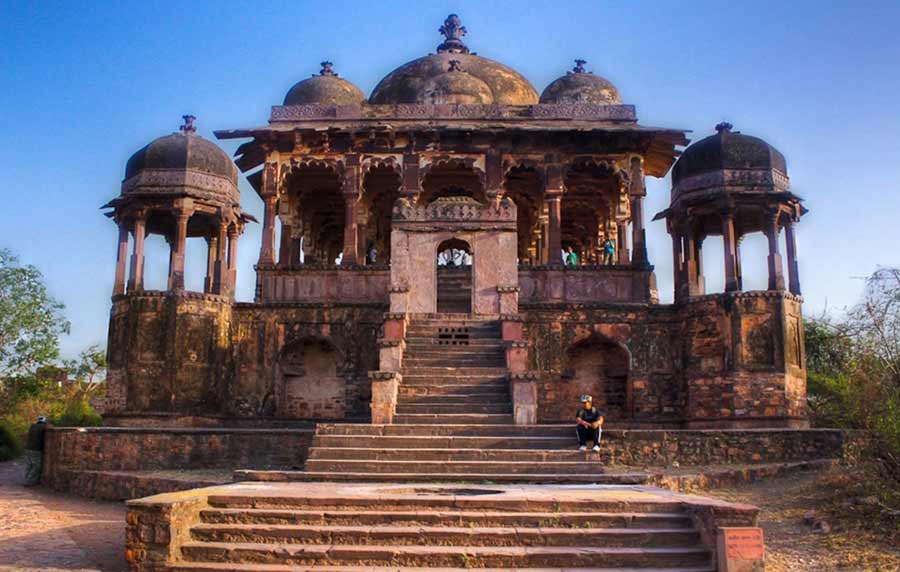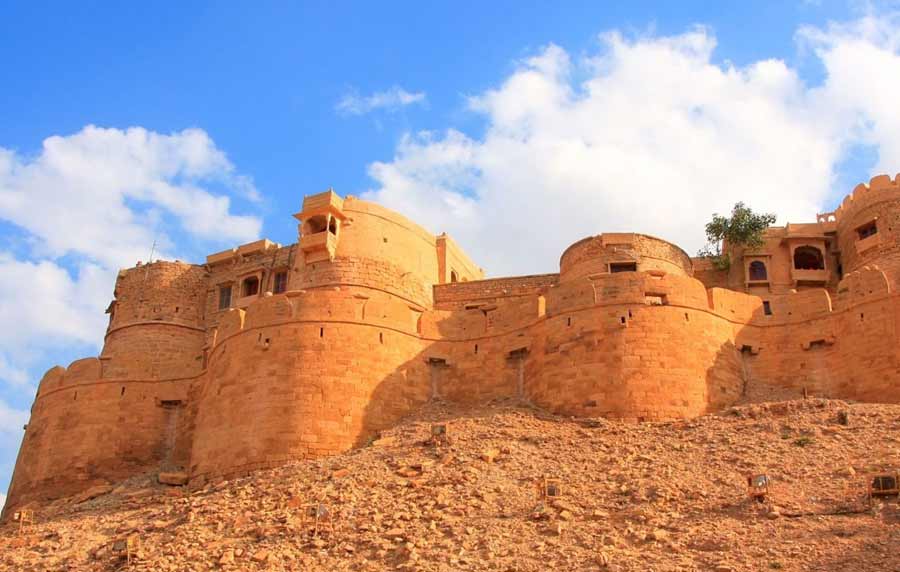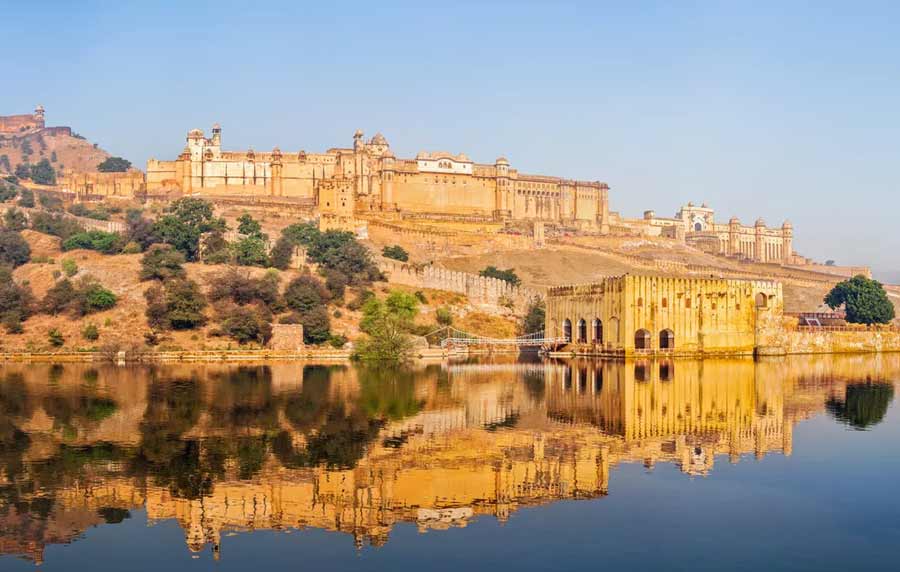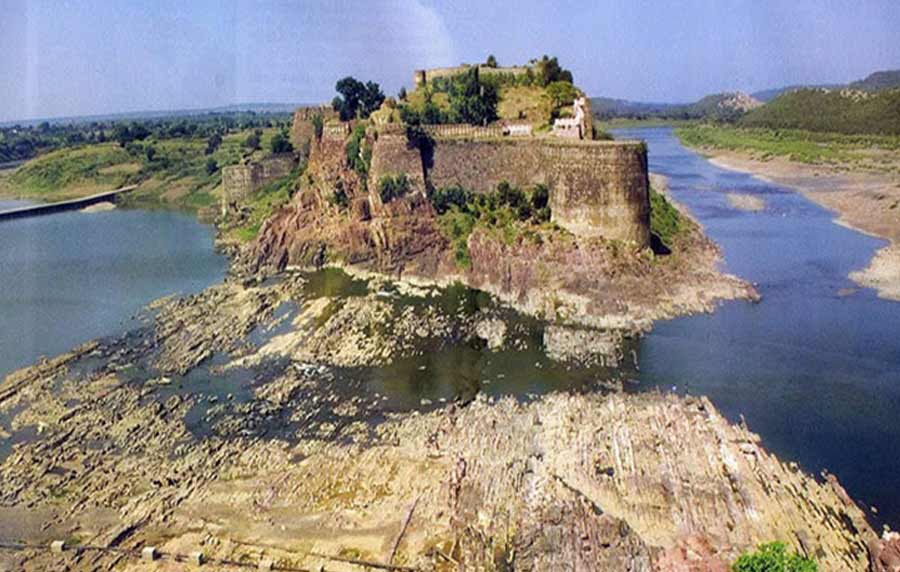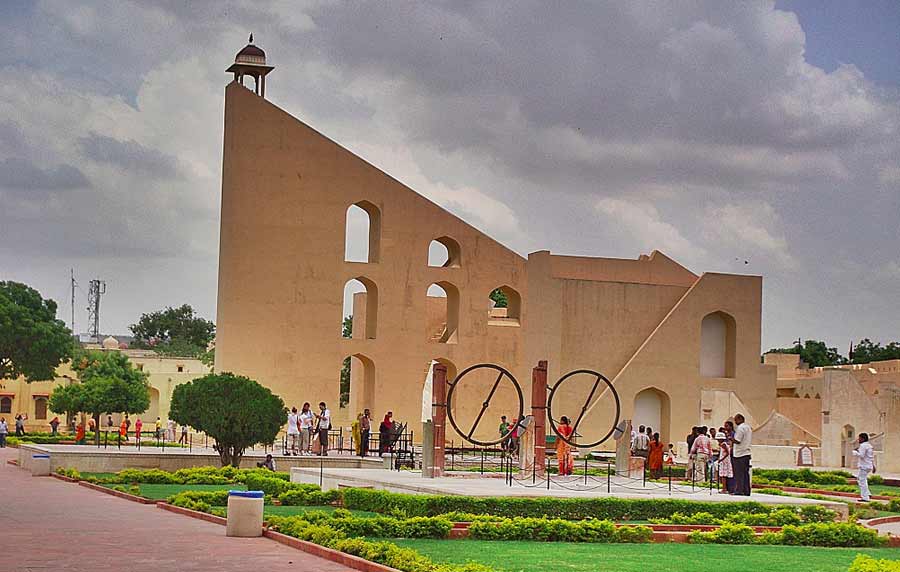Kumbhalgarh Fort
The Kumbhalgarh Fort, is a Mewar Fortress in the Rajsamand district of Rajasthan. Built on a 1100 Meter high hill top that looks over the Aravali range of hills, this majestic fort was built in 15th century by Rana Kumbha of the Rajput dynasty and expanded through the 19th century. According to popular folklore, it is believed that Maharana Kumbha used to burn massive lamps, consuming fifty kilograms of ghee and a hundred kilograms of cotton every night, to provide light for the farmers who worked during the nights in the valley. Its wall is the second largest wall in Asia.
Encircled by thirteen elevated mountain peaks, the fort is constructed on the top most ridges around 1,914 meters above sea level. The fortifications of the fort extend to the length of 36 kilometers and this fact has made this fort to be in the international records. It is stated to be the second longest wall in the world, the first being ''the Great Wall of China''. The huge complex of the Fort has numerous palaces, temples and gardens making it more magnificent.
On your way to Kumbhalgarh fort, a few kilometers before, you will find yourself on a zigzag road going through deep ravines and thick forests. This way would take you to the Arait Pol, where you can trace the watch-tower and then Hulla Pol, Hanuman Pol, Ram Pol, Bhairava Pol, Paghra Pol, Top-khana Pol and Nimboo Pol will come across your track.
The impregnable Fort boasts of seven massive gates, seven ramparts folded with one another with designed walls toughened by curved bastions and huge watch towers. The strong structure and solid foundation of the Fort made it unbeatable till date. The hefty walls of the fort are broad enough to stand eight horses side by side. There are not less than 360 temples inside the complex of the Fort. Amongst all of them, Shiva Temple is worth visiting that comprises a huge Shivalinga (Phallic form).
The Fort is also known for its famous palace that resides on the top of structure. This beautiful palace is known as 'Badal Mahal' or the Palace of Cloud. It is also accredited to be the birth place of great warrior Maharana Pratap. This palace has beautiful rooms with lovely color combination of green, turquoise and white presenting a bright contrast to the earthy colors of the Fort. This place gives the appearance of being wandering in the world of clouds. Cloud Palace also offers a fantastic panoramic vista of the down town.
In the late 19th century, Rana Fateh Singh once again took the initiative to rebuild this remarkable palace. In the times of dissension, the fort also offered refuge to the rulers of Mewar. Even, the baby king Udai Singh was kept here safe during the time of battles. The large complex of the Fort offers ancient remnants to explore and one can spend a pleasurable evening while strolling through the ravines of Kumbhalgarh Fort.
UNESCO World Heritage Sites Rajasthan
Rajasthan, in India literally draws its name from the fact that it was once home to the Kings of the country. The royal legacy that the country saw in the Rajput and Mughal eras, led to the development of number of World Heritage Sites in Rajasthan. The numbers of historical monuments of the Royal Rajput and Mughal era are still present in the city. These historical monuments speak of the splendor and the grandeur of the ancient times. The ambience and aura of these sites carry a touch of the Royalty of the Mughal and Rajput rules of the country, which is almost impossible to be repeated today. As a result, the unmatched beauty and grandeur of these sites have made UNESCO to declare and pamper some of them as World Heritage Sites in Rajasthan. Apart from its rich and colorful culture, Rajasthan draws tourists in humongous numbers with its majestic forts and wildlife areas. Some of these places are so significant that these have made it to UNESCO’s World Heritage Site list. The Hill Forts of Rajasthan comprises six magnificent fortresses that have stood the test of time, giving a peek into the state’s storied past and aesthetical evolution. Apart from these, a protected territory and an astronomical observatory are also UNESCO World Heritage Sites.
 +91 9799050299
+91 9799050299 

